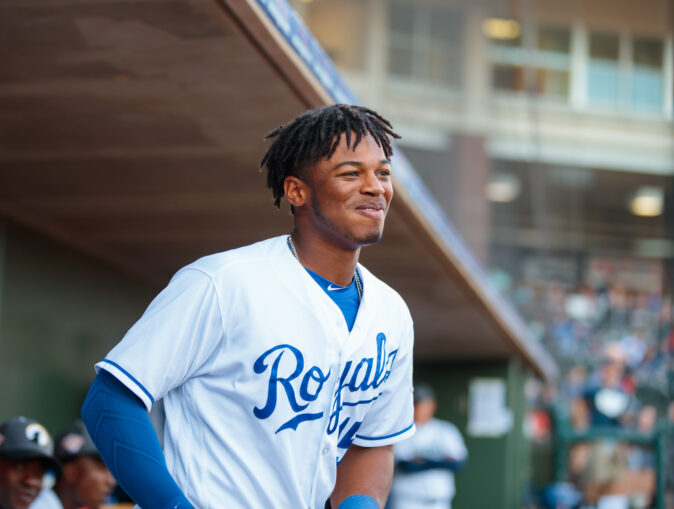
While former general manager Brodie Van Wagenen didn’t shy away from trading prospects during his tenure with the New York Mets, current team president Sandy Alderson has made it a priority to restock the club’s farm system this winter, and the front office took another step forward in that department on Wednesday.
Becoming part of a three-team trade involving the Boston Red Sox and the Kansas City Royals, the Mets acquired outfielder Khalil Lee, 22, in exchange for pitcher Josh Winckowski — who was originally acquired in the Steven Matz deal — and a player to be named later.
So what type of player are the Mets receiving in this trade? And how can Lee make an impact this season?
Well, the 5′ 10″ outfielder was originally drafted by the Royals in the third round of the 2016 MLB Draft and was ranked the No. 8 prospect in their farm system in 2020, according to MLB.com. After serving as a two-way player in high school, the 2015-16 Gatorade Player of the Year award winner became a full-time position player during his first professional season and has flourished in that role ever since.
Making an instant impact in Rookie Ball, Lee earned 222 plate appearances, producing six home runs, 29 RBI, .214 ISO, .358 BABIP, .409 wOBA, 14.9% walk rate, 25.7% strikeout rate, nine stolen bases, a 149 wRC+ and a batting line of .269/.396/.484/.880 during the 2016 campaign.
Following this impressive debut, the left-hander didn’t waste any time climbing through Kansas City’s minor-league system as he reached Double-A Northwest Arkansas in 2018, which is an extremely quick progression for someone drafted out of high school. While he struggled during his first stint with the Naturals, resulting in a poor slash line of .245/.330/.353/.683, the youngster returned the following season and enjoyed much better results.
Over his 546 plate appearances in 2019, Lee recorded 21 doubles, eight home runs, 51 RBI, .109 ISO, .374 BABIP, .341 wOBA, 11.9% walk rate, 28.2% strikeout rate, 53 stolen bases, and a 112 wRC+ with a line of .264/.363/.372/.735. Additionally, this stellar showing also made him a Texas League Midseason All-Star.
As for his defense, the Flint Hill School standout’s lightning-fast quickness allows him to play all three outfield positions, although he’s spent the majority of his career roaming around in center and right field. Along with his speed, the former third-round selection also features a plus arm, which could become even stronger once he enters his prime.
Since Lee — who’s now considered the Mets’ No. 7 top prospect — is already on the 40-man roster, he’s expected to join the team in Port St. Lucie once Spring Training officially begins later this month. But taking into account that he owns all three minor-league options, there’s a very strong chance he’ll be sent to Triple-A Syracuse before the regular season opens.
Even if the power-hitting outfielder doesn’t break camp with the Mets, he’ll still likely be the first person they call up if any of their current outfielders requires a stint on the injured list at some point in 2021. In addition to serving as an injury replacement, it’s also possible the Delaware native could earn a September promotion if things go well in the minors.
As for his long-term development, Lee must learn to become more disciplined moving forward, as he’s become a little too passive at times and has generated a strikeout rate of 24% or higher in four of his five professional seasons. If he can become a little more selectively aggressive at the plate, his swing-and-miss metrics could decrease dramatically, which may result in an increase in power, as well.
Considering the Mets’ minor-league system lacked considerable outfield depth last season, as they only had two outfielders ranked inside their top-15 prospects and neither of them owned any experience above Rookie Ball, making this move for Lee should prevent that issue from occurring once again in 2021.















